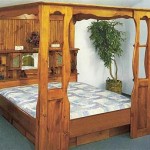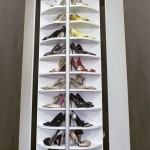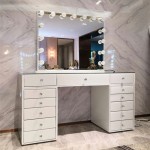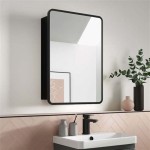Round Porthole Mirrors: A Timeless Nautical Accent
Round porthole mirrors, inspired by the circular windows found on ships, have become a popular and enduring décor element. Their distinctive design evokes a sense of maritime history and adventure, making them a versatile addition to a wide range of interior styles. This article explores the history, construction, design considerations, and applications of round porthole mirrors.
The foundational concept of the porthole mirror lies in its mimicry of a ship's porthole. Real portholes were designed to allow light and ventilation into the enclosed spaces of a vessel while maintaining structural integrity and watertight seals. The circular shape proved to be optimal for these purposes, offering strength and minimizing stress points. The transition from functional ship hardware to a decorative object is a testament to the inherent aesthetic appeal of the porthole's design.
The adoption of porthole mirrors as a design element began in the mid-20th century, coinciding with a broader cultural interest in nautical themes. Coastal homes, restaurants, and even commercial spaces began incorporating repurposed or newly manufactured portholes for decorative purposes. The mirrored version became especially popular, adding both light and a visual element to rooms.
History and Evolution of the Porthole Mirror
The porthole's origins can be traced back to the development of shipbuilding techniques that allowed for enclosed hulls. Early examples were simple glazed openings, but as naval architecture advanced, so did the design of portholes. The introduction of metal frames, often made of brass or bronze, provided greater durability and resistance to corrosion in the harsh marine environment.
The adaptation of the porthole for decorative purposes was a natural progression. People who spent time on or around ships, or those who simply admired the seafaring lifestyle, wanted to incorporate elements of that world into their homes. Repurposed portholes became prized possessions, and manufacturers soon recognized the demand for reproductions and variations, including mirrors.
The evolution of the porthole mirror has seen a diversification in materials and styles. While brass remains a popular choice for frames, other metals such as stainless steel, aluminum, and even painted iron are also used. The size of the mirrors varies considerably, from small accent pieces to large, statement-making installations. The level of detail in the frame also ranges from simple, utilitarian designs to ornate, highly decorative ones.
The aesthetic appeal of porthole mirrors lies in their ability to evoke a sense of history, travel, and adventure. They connect to a romanticized view of the sea, representing exploration and discovery. Even in landlocked settings, a porthole mirror can bring a touch of nautical charm to a room.
Construction Materials and Design Variations
The construction of a porthole mirror involves several key components. The frame is typically made of metal, wood, or a combination of both. The mirror itself is a standard glass mirror, often with a silvered or aluminized backing. The method of attaching the mirror to the frame varies depending on the design, but often involves adhesives, clips, or a combination of both to ensure stability and prevent movement.
Brass is a favored material for porthole mirror frames because of its resistance to corrosion, its warm color, and its association with traditional nautical design. However, brass is relatively expensive, and its tendency to tarnish requires regular polishing to maintain its shine. Stainless steel is a more modern alternative, offering similar corrosion resistance with a brighter, more contemporary look. Aluminum is a lightweight and affordable option, but it may not possess the same visual appeal as brass or stainless steel.
Wood frames offer a different aesthetic entirely. They can be stained or painted to match a variety of décor styles, and their natural texture adds warmth and character. Wood porthole mirrors are often found in rustic or coastal-themed interiors. However, wood is more susceptible to moisture damage than metal, so it is important to choose a suitable type of wood and apply a protective finish.
Design variations in porthole mirrors are numerous. Some feature intricate detailing on the frame, such as embossed patterns, rope accents, or simulated rivets. Others are designed to mimic specific historical porthole designs. Some even incorporate functional elements, such as hinges or latches, to further enhance the nautical authenticity. Some porthole mirrors may contain faux screws or bolts to provide a realistic look. The color of the frame can also vary widely, from polished brass to antique bronze to painted finishes in navy blue, white, or other nautical colors.
The choice of materials and design details will significantly impact the overall look and feel of the porthole mirror. A brass-framed mirror with simulated rivets will evoke a more traditional, maritime aesthetic, while a stainless steel mirror with a minimalist frame will offer a more contemporary and streamlined look.
The size of the mirror is another important design consideration. Small porthole mirrors are often used as accent pieces, while larger mirrors can serve as focal points in a room. The size of the mirror should be proportionate to the space in which it is placed to create a balanced and visually appealing composition.
Applications and Design Considerations in Interior Spaces
The versatility of round porthole mirrors allows them to be used in a wide variety of interior spaces. They are particularly well-suited for coastal homes, bathrooms, bedrooms, and hallways, but they can also be incorporated into other types of interiors to add a touch of nautical flair.
In coastal homes, porthole mirrors can reinforce the overall theme and create a cohesive design. They can be used in bathrooms as vanity mirrors, in hallways as decorative accents, or in living rooms as statement pieces above a fireplace or sofa. In bathrooms, especially, the mirror can withstand moisture due to its nautical design and material resilience.
In bathrooms, porthole mirrors can be a stylish and functional alternative to traditional rectangular mirrors. Their round shape softens the often-harsh lines of bathroom fixtures, and their nautical design adds a unique touch. When choosing a porthole mirror for a bathroom, it is important to consider the size and placement of the mirror in relation to the vanity and other fixtures.
In bedrooms, porthole mirrors can be used to create a relaxing and inviting atmosphere. They can be hung above a dresser or nightstand, or they can be incorporated into a gallery wall. Their round shape and reflective surface can help to create a sense of spaciousness and light in the room.
In hallways, porthole mirrors can be used to brighten up a narrow space and create a sense of depth. They can be hung on a blank wall or placed above a console table to add visual interest. The mirror can also be used to reflect light from nearby windows or fixtures, making the hallway feel brighter and more inviting.
When incorporating a porthole mirror into any interior space, it is important to consider the overall design scheme and the existing furniture and accessories. The mirror should complement the other elements in the room and contribute to a cohesive and harmonious design. For example, a brass-framed porthole mirror would be well-suited for a room with warm, earthy tones and natural materials, while a stainless steel mirror would be a better choice for a room with a more contemporary and minimalist aesthetic. It is important to also consider the size of the space the mirror will be installed in; a larger mirror would be more appropriate for a spacious room, while a smaller mirror would do for a smaller space.
The placement of the porthole mirror is also crucial. Consider what the mirror will reflect. A well-placed mirror can enhance the view from a window or highlight a particular architectural detail. A poorly placed mirror can reflect clutter or create unwanted glare. Proper lighting is also essential, as it can enhance the reflective qualities of the mirror and create a more visually appealing effect. It is also important to consider the height at which the mirror is hung. It should be positioned at a comfortable viewing height for the people who will be using it most often.

Porthole Wall Mirror Demeter Home

Nautical Silver Porthole Mirror From The White Lighthouse Furniture

Porthole Cabin Wall Mirror Recycled Steel Drum

Langford Black And Gold Porthole Mirror The Forest Co

Lena Coastal Industrial Rustic Broe Metal Round Porthole Wall Mirror 23 5d Medium 21 40 Kathy Kuo Home

Steamship Era Riveted Porthole Mirror Nautical Luxuries

Chaplin Round Porthole Mirror Gold 65cm Mirrors

11 Brass Porthole Mirror Polished Finish Nautical Maritime Wall Decor Window Com

Porthole Wall Mirror Demeter Home

Nautical Round Mirror For Wall Vintage Porthole 17 034 Chrome Decor








